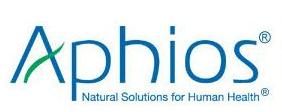预约演示
更新于:2025-12-16
Betulinic acid
桦木酸
更新于:2025-12-16
概要
基本信息
权益机构- |
最高研发阶段临床前 |
首次获批日期- |
最高研发阶段(中国)临床前 |
特殊审评孤儿药 (美国) |
登录后查看时间轴
结构/序列
分子式C30H48O3 |
InChIKeyQGJZLNKBHJESQX-FZFNOLFKSA-N |
CAS号472-15-1 |
关联
2
项与 桦木酸 相关的临床试验NCT00701987
Dose-escalating, Pilot Study to Assess the Safety, Tolerability, and Preliminary Efficacy of ALS-357 Topically Administered to Patients With Cutaneous Metastatic Melanoma
A phase I trial to evaluate the safety and tolerability of ALS-357 when administered for four weeks as a topical ointment, in escalating doses, to patients with cutaneous metastatic melanoma and to evaluate the effect of escalating doses of topically applied ALS-357 on histological remission of cutaneous metastatic melanoma and induction of apoptotic biomarkers.
开始日期2008-06-01 |
申办/合作机构 |
NCT00346502
Phase I/II Evaluation of Topical Application of 20% Betulinic Acid Ointment in the Treatment of Dysplastic Nevi With Moderate to Severe Dysplasia
The purpose of this study is to evaluate the safety and effectiveness of an experimental 20% betulinic acid ointment (BA ointment) as a treatment for dysplastic nevi with the potential to transform into melanoma.
开始日期2006-01-01 |
申办/合作机构 |
100 项与 桦木酸 相关的临床结果
登录后查看更多信息
100 项与 桦木酸 相关的转化医学
登录后查看更多信息
100 项与 桦木酸 相关的专利(医药)
登录后查看更多信息
3,678
项与 桦木酸 相关的文献(医药)2025-12-01·FOOD CHEMISTRY
Differential accumulation of triterpenoids in Ziziphus jujuba and Ziziphus acidojujuba: insights from terpenoid metabolomics across organs and developmental stages
Article
作者: Zhao, Zhihui ; Jia, Tianshuo ; Meng, Xianwei ; Pan, Fuxu ; Liu, Zhiguo ; Liu, Mengjun ; Song, Yufei ; Wang, Lili
Triterpenoids constitute the principal bioactive compounds in jujube (Ziziphus jujuba Mill.) and sour jujube (Ziziphus acidojujuba Cheng et Liu), but their spatiotemporal distribution and metabolic accumulation patterns remain understudied. In this work, metabolomic analysis via UPLC-MS/MS identified 85 distinct triterpenoid metabolites, comprising 57 triterpenes and 28 triterpene saponins. Triterpenes accumulate mainly in the root bark and branch bark, whereas triterpenoid saponins are concentrated mainly in the flowers and young/mature leaves. In the prefruit stage, triterpene saponins accumulate, whereas in the later stages of development, triterpenes metabolites subsequently accumulate. Quantitative analysis revealed that betulinic acid had the highest concentration in the root bark (4.945 mg/g). This study provides the first comprehensive, metabolomics characterization of triterpenoid composition and accumulation dynamics in jujube and sour jujube and may guide future applications in functional food development and phytopharmaceutical research.
2025-12-01·STEROIDS
Potential of betulinic acid in the Antiformation and eradication of bacterial biofilms and pharmacokinetic and toxicological analysis
Article
作者: de Araújo Neto, José Bezerra ; Roque Paulo, Cícera Laura ; Bezerra Morais Braga, Maria Flaviana ; Barbosa Filho, José Maria ; Dos Santos, Josefa Sayonara ; Melo Coutinho, Henrique Douglas ; Cosmo Andrade-Pinheiro, Jacqueline ; Soares, Juliete Bezerra ; Pereira da Silva, Ana Raquel ; do Socorro Costa, Maria ; de Freitas, Thiago Sampaio ; Pereira da Silva, Camila Aparecida ; Santos Araújo, Nara Juliana
Bacterial biofilms are complex, organized structures that adhere to surfaces, protected by a self-produced extracellular matrix. This conformation makes it difficult to eradicate infections with conventional treatments. In view of this, natural compounds have emerged as promising therapeutic alternatives. This study evaluated the potential of betulinic acid, a pentacyclic triterpene, in inhibiting the formation and eradication of bacterial biofilms, as well as predicting its pharmacokinetic properties and toxicity by means of in silico analyses. Six bacterial strains were tested. The crystal violet test was used to evaluate the antibiofilm activity, with chlorhexidine and the antibiotics norfloxacin, ampicillin and gentamicin as controls. The results showed that betulinic acid had moderate to good activity in inhibiting biofilm formation and a variable response in eradication, depending on the strain. In silico analyses indicated favorable physicochemical and pharmacokinetic properties, with emphasis on good intestinal absorption, oral bioavailability and absence of inhibition of cytochrome P450 enzymes, although potential toxicity risks were identified. These findings suggest that betulinic acid is a promising candidate for the development of new therapeutic strategies to combat infections associated with biofilms.
2025-12-01·EUROPEAN JOURNAL OF PHARMACOLOGY
Betulinic acid and apoptosis-involved pathways: Unveiling its bidirectional regulatory role
Review
作者: Zheng, Yongquan ; Wang, Dan ; Gao, Yi ; Sun, Hao
Betulinic acid (BA), a naturally occurring pentacyclic triterpenoid, exhibits remarkable bidirectional regulatory effects on apoptosis, demonstrating pro-apoptotic activity in cancer cells while protecting normal cells from oxidative stress and apoptosis. This systematic review synthesizes decade-long research to elucidate BA's multifaceted mechanisms across apoptosis-related pathways. In malignant cells, BA induces caspase-dependent apoptosis through both extrinsic pathways mediated by FADD via death receptor activation and intrinsic mechanisms involving ROS accumulation, Bcl-2 family-mediated mitochondrial dysfunction, and ERS-triggered PERK activation. Concurrently, it suppresses PI3K-Akt and NF-κB survival signaling while activating AMPK/mTOR-autophagy crosstalk and p53-dependent DNA damage responses. Paradoxically, BA protects normal tissues by enhancing antioxidant defenses through Nrf2/SOD activation, inhibiting pro-inflammatory TNF-α/NF-κB signaling, and stabilizing mitochondrial integrity. Key to its therapeutic potential is the context-dependent modulation of critical nodes that balance apoptosis initiation and cytoprotection. Structural derivatives and nano-formulations further enhance BA's tumor selectivity and bioavailability. By mapping BA's pleiotropic interactions within apoptotic networks, this review highlights its unique capacity to function as a precision therapeutic agent, offering dual cytostatic and cytoprotective benefits. These insights position BA as a promising candidate for cancer therapy development, warranting further investigation into pathway crosstalk and clinical translation strategies.
16
项与 桦木酸 相关的新闻(医药)2025-12-10
在北纬 40°-50° 的寒带林区,白桦树的躯干上生长着一种黑褐色的 “生命馈赠”—— 桦褐孔菌(学名 Inonotus obliquus),俗称桦树茸、桦癌褐孔菌。这种需依附白桦树生长 10-15 年、直至树木枯萎方能成熟的药用真菌,因严苛的生长环境与漫长的生长周期,被誉为 “森林钻石”“真菌之王”。从 16 世纪东欧、俄罗斯的民间偏方,到现代实验室的精密解析,从中医的 “散结防癌” 理论,到西医的分子机制研究,桦褐孔菌跨越时空与地域,赢得了全球范围内的广泛认可。尤其值得关注的是,中医专家张文彭在央视等权威媒体平台明确阐述其治疗疾病的临床价值,为这一 “天然瑰宝” 的药用地位提供了重要的中医理论支撑与实践佐证。本文将系统梳理桦褐孔菌的全球认可历程、现代科研成果,重点解析张文彭专家的核心观点,全面呈现这一药用真菌的多元价值。一、跨越千年的全球认同:从民间智慧到权威背书
桦褐孔菌的药用价值并非现代发现,而是在全球多个地区历经数百年实践验证的传统智慧结晶。从西伯利亚的林海到北欧的森林,从中国的长白山到日本的北海道,不同文明都曾见证其调理疾病、守护健康的独特功效,而现代权威机构与媒体的认可更让其价值得到广泛传播。(一)欧亚大陆的传统应用:千年实践的智慧沉淀
桦褐孔菌的药用历史可追溯至 16 世纪的东欧与俄罗斯。在西伯利亚地区,当地居民将其研磨成粉,冲泡成类似咖啡的饮品,用于调理肠胃、抵御严寒与预防疾病。前苏联诺贝尔文学奖得主亚历山大・索尔仁尼琴在《癌病房》中曾记载:“有一俄罗斯村庄,多年来熬一种气味和色泽类似咖啡的白桦茸茶,结果村庄里无一人得肠胃病及癌症”。这一描述并非文学夸张,而是当地民间应用的真实写照。在俄罗斯,桦褐孔菌被奉为 “西伯利亚灵芝”,不仅用于日常养生,更在战争年代成为士兵增强体力、预防感染的重要物资。
与此同时,北欧的芬兰、瑞典等国也有着悠久的应用传统,当地渔民与猎人常随身携带桦褐孔菌提取物,用于缓解疲劳、修复伤口与预防呼吸道感染。在波兰,民间则将其用于调节代谢、改善体质,尤其适合高寒地区居民抵御恶劣环境对身体的侵蚀。
中国对桦褐孔菌的认知虽晚于欧洲,但长白山、大小兴安岭等寒带林区的少数民族,早已将其纳入传统药用体系。鄂伦春族、赫哲族等族群,利用当地丰富的野生桦褐孔菌资源,治疗消化不良、体虚乏力等病症,其应用理念与中医 “药食同源”“扶正固本” 的思想高度契合,为后续中医专家的临床应用奠定了实践基础。(二)现代权威的认可与传播:从科研机构到主流媒体
随着现代医学的发展,桦褐孔菌的传统功效逐渐得到全球权威机构的验证与认可。在国际层面,其调节血糖的功效已获得欧盟食品安全局(EFSA)的官方认可,同时通过美国 FDA 注册、欧盟合规认证等多项国际资质审核,成为全球公认的药食两用佳品。美国曾计划将其开发为宇航员专用饮品,足见其在营养补充与健康防护方面的突出价值。
在国内,桦褐孔菌的价值得到了权威媒体与专家的高度关注。中医专家张文彭在央视及山东卫视等平台的解读,成为其药用地位的重要背书。在央视节目中,张文彭结合中医理论与临床经验,明确指出桦褐孔菌在 “散结防癌”“调节代谢”“增强免疫” 等方面的治疗作用,为广大观众普及了这一药用真菌的临床应用价值。其解读并非空穴来风,而是基于中医 “扶正祛邪”“软坚散结” 的经典理论,结合现代药理研究成果,形成的科学认知体系,既彰显了中医的整体观,又融合了现代医学的实证精神。
此外,俄罗斯新西伯利亚医学科学研究院、日本东京大学、韩国高丽大学、中国北京中医药研究所等全球知名科研机构,通过大量实验与临床研究,持续验证桦褐孔菌的药用功效,为其全球认可提供了坚实的科学支撑。近五年,全球关于桦褐孔菌的年均新增研究论文达 120 篇,使其成为国际科研界的 “明星材料”,进一步推动了其在全球范围内的认可与应用。二、现代科研的深度解析:活性成分与药理机制的科学印证
桦褐孔菌之所以能赢得全球认可,核心在于其体内富集的 200 余种活性成分,这些成分通过协同作用,在调节代谢、增强免疫、抗肿瘤等多个维度展现出显著功效。现代科研通过精密仪器分析与严格的实验验证,逐步揭开了其功效背后的分子机制,为其临床应用提供了科学依据。(一)活性成分矩阵:多元协同的 “健康密码”
桦褐孔菌的功效源于其复杂且高效的活性成分体系,各类成分各司其职、协同作用,构成了覆盖多个健康维度的 “防护网”。
多糖类化合物:免疫调节与代谢调节的核心
多糖类化合物是桦褐孔菌的核心活性成分,占比可达 10%-20%,主要包括水溶性与非水溶性多糖,其中 β- 葡聚糖、杂多糖为主要活性类型。β- 葡聚糖作为关键成分,能直接激活巨噬细胞、T 细胞、B 细胞等免疫细胞,强化机体免疫应答,同时可改善细胞胰岛素敏感性,促进葡萄糖代谢,成为调节血糖的核心物质。杂多糖则专注于肠道健康,能促进双歧杆菌、乳酸菌等有益菌增殖,修复肠道黏膜屏障,通过改善肠道微生态间接提升整体免疫功能。
实验数据显示,桦褐孔菌多糖的免疫激活能力显著优于普通药用真菌,其 β- 葡聚糖含量与灵芝相近,但活性更强,能在更低浓度下激发免疫细胞活性。2024 年日本东京大学的人体试验证实,每日摄入 4.5g 桦褐孔菌多糖,可显著提升 NK 细胞活性,强化机体对病菌、病毒的防御能力。
三萜类化合物:代谢调控与抗肿瘤的关键
三萜类化合物是桦褐孔菌的特征性成分,涵盖羊毛甾烷型四环三萜(桦褐孔菌醇、栓菌酸、白桦脂酸等)与五环三萜(羽扇豆烷型、乌苏烷型等)两大类。其中,羊毛甾烷型四环三萜是标志性活性物质,能抑制血管紧张素转换酶,调节血脂、软化血管,减少血栓与血管硬化风险;同时可抑制炎症因子释放,缓解慢性炎症,更能直接抑制肿瘤细胞增殖、诱导癌细胞凋亡,辅助抗癌并减轻患者疼痛。
韩国高丽大学的临床试验表明,每日摄入 5g 桦褐孔菌水提取物(富含三萜类成分),连续 8 周可使高血脂患者的总胆固醇下降 9.3%,甘油三酯下降 12.7%,低密度脂蛋白胆固醇(“坏胆固醇”)降低 8.5%,充分印证了其调节血脂的功效。而在抗肿瘤研究中,桦褐孔菌醇对肺腺癌 A549 细胞株、肝癌 HepG2 细胞等均表现出显著的抑制作用,体外实验中 500mg/ml 多糖对肝癌 HepG2 细胞抑制率达 68%。
多酚与黄酮类物质:抗氧化与脏腑保护的屏障
桦褐孔菌中的多酚与黄酮类物质(含没食子酸、儿茶素、槲皮素等),搭配高活性 SOD(超氧化物歧化酶),形成了强大的抗氧化体系,其抗氧化能力远超维生素 C,能快速清除体内自由基,抑制细胞氧化应激损伤,延缓细胞衰老与血管老化。同时,这类成分还能调节胰岛素分泌,辅助稳定血糖,保护肝细胞免受毒素侵蚀,实现抗氧化、控糖与护肝的三重价值。
检测数据显示,桦褐孔菌的 ORAC 抗氧化值达 12000μmolTE/g,总酚酸含量高达 52mg/g,这一指标在天然食材中处于领先水平,使其成为抗氧化养生的优质选择。
其他活性成分:营养补充与代谢调节的辅助
除核心成分外,桦褐孔菌还含有叶酸衍生物、芳香族香草酸、丁香酸、木质素类化合物,以及 8 种必需氨基酸和钾、镁、硒、锌等多种矿物质。这些成分能补充人体必需营养,调节机体代谢,促进肠道蠕动,减少肠道毒素堆积,维持机体正常生理功能,为核心功效的发挥提供辅助支撑。(二)核心药理功效:多维度的健康守护
基于丰富的活性成分矩阵,桦褐孔菌在现代药理研究中展现出多元且显著的健康功效,覆盖代谢调节、免疫强化、抗肿瘤、抗氧化等多个核心领域,且性质温和、无明显毒副作用,适合长期温和调理。
调节血糖代谢:糖友的 “天然辅助剂”
调节血糖是桦褐孔菌最具代表性的功效,其活性成分从多个环节干预糖代谢,为血糖偏高人群提供了安全有效的调理选择。其作用机制主要包括三方面:一是 β- 葡聚糖激活胰岛素受体活性,提升细胞对胰岛素的敏感性,促进葡萄糖分解利用;二是黄酮类、三萜类物质抑制肝脏糖原分解,减缓肠道碳水化合物吸收,避免餐后血糖骤升;三是 SOD 与多酚类成分修复受损胰腺组织,改善胰岛分泌功能。
俄罗斯新西伯利亚医学科学研究院的临床研究为这一功效提供了有力佐证:对 120 名 Ⅱ 型糖尿病患者进行观察,在常规治疗基础上每日添加 3g 桦褐孔菌提取物,6 个月后患者糖化血红蛋白平均下降 0.8%,空腹血糖达标率提升 23%,且未出现明显低血糖风险。这一成果使其在俄罗斯已被开发为糖尿病辅助药物,国内企业也推出相关配伍产品,成为糖友日常调理的重要选择。
强化机体免疫:天然的 “免疫激活剂”
桦褐孔菌能从免疫细胞、免疫因子、肠道免疫三大环节激活免疫系统,构建全方位的防护屏障。多糖类成分直接刺激巨噬细胞、T 细胞、B 细胞增殖分化,增强免疫细胞对病菌、病毒的识别与吞噬能力;同时促进白细胞介素、干扰素等免疫因子分泌,强化免疫应答,尤其对流感病毒有明显抑制作用;其对肠道黏膜屏障的修复与肠道菌群的调节,更能通过 “肠道免疫” 间接提升整体免疫功能。
这一功效使其适用于老人、儿童、术后恢复者、长期熬夜劳累等免疫力低下人群,既能改善易生病的状态,也能在换季、流感高发期辅助抵御病毒侵袭,维持免疫稳态。
辅助抗肿瘤:癌症治疗的 “协同伙伴”
桦褐孔菌在抗肿瘤领域的价值,主要体现在抑制肿瘤增殖、诱导癌细胞凋亡、减轻放化疗副作用三个方面。其多糖类成分可抑制癌细胞迁移和侵袭,降低促癌基因表达;三萜类与桦褐孔菌醇能直接诱导癌细胞凋亡,对乳腺癌、胃癌、肺癌、直肠癌等多种恶性肿瘤均有抑制作用。
更重要的是,桦褐孔菌能增强癌症患者的机体免疫力,减轻化疗所致的白细胞减少、恶心呕吐等毒副作用,延长患者生存期并提升生存质量。俄罗斯学者Т.М. Гроздова的临床研究显示,31 例晚期肿瘤患者(涵盖胃、直肠、乳腺、子宫等部位肿瘤)在手术或放疗的同时配合桦褐孔菌制剂治疗 15 个月后,疼痛明显减轻,生化指标改善,接受放疗的患者白细胞计数增加,得以顺利完成治疗。需注意的是,中国抗癌协会 2024 年指南明确指出,其不能替代癌症标准治疗,仅可作为免疫辅助手段,但这并不影响其在肿瘤综合治疗中的重要价值。
调节血脂血压:代谢紊乱的 “调理良方”
针对高血脂、高血压等代谢综合征,桦褐孔菌通过多靶点干预发挥调理作用。三萜类、黄酮类成分抑制脂肪合成酶活性,减少脂肪合成并促进分解,同时降低血液中总胆固醇、甘油三酯含量,提升高密度脂蛋白胆固醇水平,减少脂质在血管壁与肝脏的沉积,辅助改善高血脂与脂肪肝。在调节血压方面,三萜类化合物能抑制血管紧张素转换酶,降低血管血压,增强血管弹性,改善血管内皮功能,减少血压波动,对高血压及其并发症有一定预防作用。三、张文彭专家的央视解读:中医视角的临床洞见
作为中医领域的权威专家,张文彭在央视等平台对桦褐孔菌的解读,并非简单复述现代药理研究成果,而是基于中医理论体系,结合临床实践经验,为其药用价值提供了独特的中医视角,实现了传统中医与现代科学的有机融合。其核心观点既植根于中医的经典理论,又得到了临床案例与现代研究的双重印证,具有重要的指导意义。(一)核心观点:“散结防癌” 的中医理论支撑
张文彭在央视解读中,将桦褐孔菌的核心功效概括为 “散结防癌”“扶正固本”,这一观点精准契合中医对药用真菌的认知逻辑。在中医理论中,“结节”“肿瘤” 的形成多与 “气滞血瘀”“痰湿郁结”“正气亏虚” 相关,而桦褐孔菌的药性与功效恰好针对这些病机。
从中医药性来看,桦褐孔菌味甘、淡,性平,归肝、肾、脾、胃经,具有 “软坚散结”“健脾益气”“清热解毒” 的功效。张文彭指出,桦褐孔菌的 “软坚散结” 作用,能针对体内气滞血瘀、痰湿凝结形成的结节(如甲状腺结节、乳腺结节、肺结节等)进行温和调理,改善体内 “瘀堵” 状态,从根源上预防结节恶变;其 “扶正固本” 功效则能增强机体正气,提高免疫力,抵御外邪侵袭,契合中医 “正气存内,邪不可干” 的核心思想。
这一解读与现代药理研究高度呼应:中医的 “散结” 对应现代医学中抑制肿瘤细胞增殖、诱导凋亡的作用;中医的 “扶正” 则对应免疫调节功能的强化。张文彭强调,桦褐孔菌的优势在于 “攻补兼施”,既能针对病灶发挥 “散结” 作用,又不损伤正气,反而能增强体质,这一特点使其在临床应用中具有广泛的适用性,尤其适合体质虚弱的慢性病患者与肿瘤高危人群。(二)临床应用:辨证施治的实践智慧
在央视节目中,张文彭结合临床案例,详细阐述了桦褐孔菌的应用场景与使用方法,体现了中医 “辨证施治” 的核心原则。他指出,桦褐孔菌的临床应用需根据患者体质与病情灵活调整,不可一概而论,其主要适用场景包括以下几类:
结节与肿瘤的辅助治疗:对于甲状腺结节、乳腺结节、肺结节等良性结节患者,可单独使用桦褐孔菌调理,通过 “软坚散结” 改善局部瘀堵;对于肿瘤患者,可在放化疗期间配合使用,既能增强免疫力,减轻毒副作用,又能辅助抑制肿瘤进展,改善生存质量。张文彭分享的临床案例显示,部分晚期肿瘤患者在常规治疗基础上添加桦褐孔菌后,疼痛减轻、食欲改善,生存期明显延长,这与俄罗斯的临床研究结果一致。
代谢综合征的调理:针对血糖偏高、高血脂、高血压等代谢紊乱人群,张文彭认为,桦褐孔菌的 “健脾益气” 功效能改善脾胃运化功能,调节体内代谢平衡,其 “清热解毒” 作用则能清除体内瘀毒,辅助稳定血糖、血脂与血压。他特别强调,这类人群使用时需遵循 “温和调理” 原则,长期坚持并配合饮食与运动,才能达到理想效果,不可替代药物治疗。
免疫力低下的体质改善:对于术后恢复、长期熬夜、年老体弱等免疫力低下人群,桦褐孔菌的 “扶正固本” 功效能补充机体正气,增强免疫功能,减少感冒、感染等疾病的发生。张文彭建议,这类人群可将其作为日常养生食材,通过茶饮、煲汤等方式长期摄入,温和提升体质。
在使用方法上,张文彭推荐了中医传统的 “药食同源” 用法:将桦褐孔菌切片后,用沸水冲泡代茶饮,或与枸杞、黄芪等配伍煲汤,既能最大限度保留活性成分,又能通过日常饮食实现调理目的。同时,他提醒消费者,应选择生长环境纯净、活性成分含量高的优质桦褐孔菌,避免购买劣质产品影响效果。(三)价值升华:中医与现代科学的融合典范
张文彭的央视解读,不仅为桦褐孔菌的临床应用提供了中医理论支撑,更展现了中医与现代科学融合的可能性。他指出,桦褐孔菌的价值之所以得到全球认可,关键在于其既符合中医的 “整体观” 与 “辨证施治” 理念,又能通过现代药理研究揭示其分子机制,实现了 “传统经验” 与 “科学实证” 的双重验证。
这种融合并非简单的 “中医加西医”,而是基于各自的理论体系,对同一物质的价值进行互补性解读。中医强调桦褐孔菌对人体整体状态的调节,注重 “治病求本”;西医则聚焦其活性成分与具体靶点的作用,注重 “精准干预”。张文彭认为,二者的结合能为患者提供更全面、更有效的健康解决方案,这也是桦褐孔菌赢得广泛认可的核心原因。四、全球产业化与未来展望:从森林瑰宝到健康产业新引擎
随着全球对桦褐孔菌认可程度的提升与科研的深入,其产业化进程不断加速,从野生资源开发到人工培育,从单一产品到多元配伍,形成了涵盖种植、提取、加工、销售的完整产业链。同时,科研领域的持续突破也为其未来发展指明了方向,使其有望在更多健康领域发挥价值。(一)全球产业化现状:资源保护与高效利用并行
桦褐孔菌的野生资源因生长周期长、产量稀少,且过度采摘导致部分地区资源濒危,中国长白山自然保护区已将其列为一级保护真菌物种。为解决资源瓶颈,全球多个国家开展了人工培育技术研究。俄罗斯、中国、日本等国通过模拟其原生生长环境,成功实现了桦褐孔菌的人工栽培,既保证了资源的可持续供应,又通过标准化种植提升了产品质量稳定性。
在产品开发方面,全球已形成多元化的产品体系:俄罗斯开发了桦褐孔菌提取物、胶囊等糖尿病辅助药物;中国企业推出了桦褐孔菌人参粉、茶饮、煲汤料等药食同源产品;欧美国家则将其作为功能性食材,添加到保健品、饮品中。这些产品既满足了不同人群的使用需求,又推动了桦褐孔菌的市场化普及。(二)科研前沿与未来方向:多领域的价值拓展
当前,桦褐孔菌的科研热点主要集中在三个方向:一是代谢调节的深度研究,重点探索其在糖尿病、肥胖症等代谢综合征中的精准作用机制,开发更高效的靶向产品;二是肠道与神经保护研究,关注其对肠道菌群平衡的调节作用及对神经细胞的保护机制,探索其在阿尔茨海默病、帕金森病等神经退行性疾病中的应用潜力;三是抗病毒研究,俄罗斯矢量病毒学中心发现其水提物能通过黑色素与蝶呤的协同作用抑制新冠病毒,相关成果已申请发明专利,为抗病毒药物研发提供了新方向。
未来,桦褐孔菌的研究将更加注重 “精准化” 与 “多元化”。在精准化方面,通过基因测序、代谢组学等技术,揭示不同人群对桦褐孔菌的应答差异,实现 “个性化调理”;在多元化方面,拓展其在皮肤护理、抗衰、抗炎等领域的应用,开发更多元的产品形态。同时,资源保护与可持续利用仍将是重点,通过人工培育技术优化与野生资源保护政策的落实,实现产业发展与生态保护的平衡。(三)挑战与机遇:规范发展与价值回归
尽管桦褐孔菌的发展前景广阔,但仍面临一些挑战:部分产品存在夸大宣传、质量参差不齐等问题,影响了消费者信任;科研与产业化的结合不够紧密,部分科研成果难以转化为实际产品;不同国家的标准不统一,制约了其全球贸易的发展。
为应对这些挑战,需要政府、企业、科研机构的协同努力:政府应加强行业监管,制定统一的质量标准与检测方法,规范市场秩序;企业应加大研发投入,推动科研成果转化,提升产品科技含量;科研机构应持续深化研究,拓展桦褐孔菌的应用领域,为产业发展提供技术支撑。
张文彭在央视解读中强调,桦褐孔菌的价值回归需要 “科学认知” 与 “理性应用”,既要充分认识其药用价值,又不能将其神化为 “万能药”。只有在科学理论的指导下,通过规范的产业发展与理性的市场推广,才能让这一 “森林钻石” 真正服务于人类健康。五、结语:自然馈赠的健康启示
桦褐孔菌的全球认可之路,是一部 “传统智慧” 与 “现代科学” 交融的发展史。从 16 世纪的民间偏方到 21 世纪的全球健康新宠,从中医的 “散结防癌” 到西医的分子机制,从野生资源到产业化产品,它用数百年的实践与研究证明了自身的多元价值。张文彭专家的央视解读,不仅让更多人了解到这一药用真菌的临床价值,更展现了中医在现代健康产业中的独特魅力。
在健康需求日益增长的今天,桦褐孔菌的故事给予我们重要启示:自然中蕴藏着丰富的健康宝藏,传统智慧值得我们深入挖掘与传承;而现代科学则为这些宝藏的价值验证与应用拓展提供了强大工具。未来,随着科研的不断深入与产业的规范发展,桦褐孔菌必将在全球健康领域发挥更大作用,为人类的健康福祉贡献更多 “自然力量”。正如张文彭所言,“真正的健康源于自然的馈赠与科学的应用”,桦褐孔菌的全球回响,正是这一理念的生动诠释。
若您愿深入探索桦褐孔菌的神秘世界,解锁更多未知,期待与您展开一场智慧与知识的深度对话,共探其奥秘
生物类似药
2025-12-08
·搜狐新闻
急性肺损伤(acute lung injury,ALI)是一种常见与炎症相关的高死亡率的呼吸疾病,其特征是肺部炎症反应不受控制、大量中性粒细胞积累、肺内皮和上皮屏障损伤及弥漫性肺泡损伤[1]。免疫细胞及细胞炎症因子在疾病发展过程中发挥了重要作用,现阶段ALI的治疗手段相对有限,激素类药物如地塞米松因其良好的抗炎效果,被广泛用作ALI的治疗药物。然而,频繁或高剂量使用地塞米松会导致高血糖、免疫抑制和骨质疏松等严重不良反应[2]。根据其病理机制,目前的治疗方案是将通气治疗与各种抗炎、抗菌、抗氧化和抗凝药物相结合,及外科手术、基因治疗、间充质干细胞移植和各种支持性护理措施[3]。然而,尽管取得了一些进步,但由于疾病病因复杂、个体变异性显著和疾病患病率高导致死亡率达30%~50%[4]。这一挑战构成了巨大的社会经济负担,严重影响了患者的身心健康。因此,寻找能够安全有效减缓ALI的药物已成为目前研究的热点领域。白芍是毛茛科植物芍药Paeonia lactiflora Pall的干燥根,主要成分包括单萜类、三萜类及黄酮类化合物等,用于治疗疼痛、炎症和免疫疾病,但存在生物利用度低、单药疗效有限等问题[5]。因此,中药配伍策略在其应用过程中变得尤为重要。《医学源流论》曰:“药有个性之专长,方有合群之妙用。”中药配伍是中医药临床应用的精华之一,合理配伍是保障中药临床用药有效性和安全性的重要措施[6]。文献调研发现白芍是仅次于甘草的高频配伍减毒中药,可减轻有毒中药雷公藤、川乌、马钱子等引起的靶器官毒性[7]。基于中药“君臣佐使”理论,白芍通过配伍增强疗效、降低毒性,用于镇痛、抗炎等[8]。实际上,中药配伍即为中药多成分在体内外的相互作用,可借助现代科技手段,表征中药成分之间的拮抗、相加或协同作用,精准呈现中药在体内多层级的时空对话。因此,本文不仅梳理了白芍主要活性成分改善ALI的分子机制,更着重于系统归纳和阐释白芍与多种常用中药配伍形成的药对在抗炎、抗氧化、免疫调节及减毒等方面的协同作用规律与潜在机制,填补当前该领域配伍研究系统性不足的空白,为基于中药配伍理论研发更安全有效的ALI防治方案提供全面的科学依据和创新思路。1 ALI的发病机制ALI及其较严重的形式急性呼吸窘迫综合征是由感染、吸入、严重败血症、输血、休克等因素引起的以全身炎症反应为特征的临床综合征[9-10]。ALI主要病理特征是肺毛细血管内皮细胞损伤,导致血管壁通透性显著增高,上皮和间质水肿,二氧化碳弥散障碍和气体交换障碍[9-12]。此外,ALI的发生是参与炎症反应的多种细胞因子和信号通路相互作用、相互影响的共同结果,现对其中4个主要信号通路展开总结。1.1核因子-κB(nuclear factor-κB,NF-κB)信号通路1.2 Janus激酶(Janus kinase,JAK)/信号转导与转录激活因子(signal transducer and activator of tranion,STAT)信号通路JAK属于非受体型酪氨酸激酶家族,在细胞因子受体介导的信号转导过程中发挥重要作用[19]。研究表明,STAT1的活化状态与M1型巨噬细胞的分化及功能活化密切相关,该蛋白经核转位后可显著促进IL-12、TNF-α等促炎因子的基因表达[20]。相比之下,STAT6则是调控M2型巨噬细胞极化的关键转录因子,其活化主要依赖于IL-4和IL-13刺激后引发的JAK激酶级联反应[21]。活化的STAT6进入细胞核内,特异性调控M2型巨噬细胞相关基因的表达谱[22]。值得注意的是,细胞因子信号转导抑制因子(suppressors of cytokine signaling,SOCS)蛋白家族作为STAT信号通路的负反馈调节因子,可通过抑制JAK/STAT通路活性来调控巨噬细胞的极化[23]。Shi等[24]发现JAK2/STAT3/SOCS3信号轴的异常活化会促进巨噬细胞向M1型极化。在机械通气相关肺损伤的动物模型中,IL-6的注射可显著增加肺泡灌洗液蛋白含量,提示肺血管通透性增加和损伤程度加重[25]。从分子机制来看,IL-6主要通过激活JAK/STAT3通路来促进Th17细胞、CD8+T细胞及B细胞的分化,同时抑制调节性T细胞的成熟过程[26]。1.3 磷脂酰肌醇3-激酶(phosphatidylinositol-3-kinase,PI3K)/蛋白激酶B(protein kinase B,Akt)信号通路PI3K是由催化亚基和调节亚基共同构成的异源二聚体蛋白复合物。该酶通过催化底物磷脂酰肌醇-4,5-二磷酸转化为磷脂酰肌醇-3,4,5-三磷酸,进而激活下游关键效应分子Akt[27]。研究表明,PI3K/ Akt信号通路在调控巨噬细胞极化过程中具有重要作用[28]。实验证据显示,特异性抑制巨噬细胞内PI3K/Akt信号通路可显著抑制M2型巨噬细胞的极化过程[29]。进一步研究发现,Akt家族不同亚型对巨噬细胞极化具有差异性调控作用:Akt1主要参与M1型极化调控,其缺失会导致诱导型一氧化氮合酶(inducible nitric oxide synthase,iNOS)及促炎因子IL-6和TNF-α的表达上调;而Akt2则与M2型极化相关,其缺陷可促进抵抗素样α、类几丁质酶3等M2标志物及抗炎因子IL-10的表达升高[30-32]。1.4 核因子E2相关因子2(nuclear factor E2 related factor 2,Nrf2)信号通路Nrf2被认为在调节促炎因子表达和细胞内活性氧水平方面起关键作用。在M1型巨噬细胞炎症模型中,Nrf2通过直接清除活性氧并通过阻断IL-6和IL-1β基因的转录来抑制M1极化,从而发挥抗炎作用[33]。Wei等[34]发现Nrf2可通过促进巨噬细胞M2型极化显著降低脂多糖诱导的ALI小鼠肺部损伤和病死率。2 白芍活性成分治疗ALI的机制白芍作为传统中药的代表性药材,其临床应用可追溯至东汉时期的《神农本草经》,该典籍明确记载:“芍药,味苦平。主邪气腹痛,除血痹,破坚积、寒热、疝瘕,止痛,利小便,益气”[35]。其镇痛、抗炎及免疫调节功效在长期的临床应用和现代研究中已得到充分验证[36]。白芍的化学成分多样,主要包括单萜及其糖苷、三萜类、类黄酮、鞣质和多糖[37-38]。这些发现为传统中药的现代化应用提供了科学依据。2.1 单萜及糖苷类单萜及其糖苷类成分主要有芍药苷、芍药内酯苷、氧化芍药苷和苯甲酰芍药苷等,组成的复合物称为白芍总苷(total glucosides of paeony,TGP),是主要的药效成分。大量研究证实,TGP具有广泛的药理活性,包括镇痛镇静、抗炎消肿、抗惊厥、改善抑郁症状及免疫调节等[39-43]。2.1.1 TGPTGP抗炎和免疫调节特性已在临床中得到广泛验证。该药物成分具有以下突出优势:(1)双向免疫调节功能,能够平衡机体免疫应答;(2)作用温和,不良反应发生率低;(3)适应证范围广泛。这些特点使得TGP在临床治疗和新药研发领域展现出良好的应用前景[44-45]。孙婧等[46]探讨TGP治疗ALI小鼠的效果及机制,结果表明TGP在脂多糖诱导的ALI小鼠模型中显著降低肺组织IL-1β、IL-6表达,具体机制可能与其降低外周血、肺脏中性粒细胞和脾脏炎症细胞比例,抑制肺巨噬细胞向M1型极化,抑制NF-κB炎症信号通路激活和炎症因子释放有关。此外,TGP能够抑制促炎因子的释放来调节炎症反应,缓解卵清蛋白诱导的小鼠哮喘[47]。2.1.2 芍药苷芍药苷作为TGP的核心活性成分,其含量占比超过40%。该成分因其显著的抗炎与免疫调节特性,及良好的安全性和低毒特点而备受关注[48-49]。研究表明,芍药苷不仅能够调控免疫细胞的功能活性,还能抑制炎症介质的释放并修复异常的信号转导通路。芍药苷对ALI也有显著的治疗作用,口服芍药苷对甲型流感病毒引起的小鼠ALI有明显的抑制作用,其机制涉及抑制αvβ3/转化生长因子-β1(transforming growth factor-β1,TGF-β1)通路,从而降低促炎因子的产生[50]。在急性胰腺炎继发ALI模型中,芍药苷通过调节p38丝裂原活化蛋白激酶(mitogen-activated protein kinase,MAPK)和NF-κB通路发挥保护作用[51]。此外,芍药苷可通过激活Nrf2/Kelch样ECH相关蛋白1通路改善脓毒症诱导的肺损伤[52]。在禽类疾病防治方面,芍药苷通过调节内源性大麻素系统,并抑制PI3K/Akt与NF-κB信号级联反应,有效治疗大肠埃希菌诱导的鸡ALI,为禽类细菌性肺炎防治提供了新策略[53]。有研究发现,芍药苷可以激活Nrf2信号通路,通过抑制氧化应激和NOD样受体热蛋白结构域3(NOD like receptor family pyrin domain containing 3,NLRP3)炎性小体介导的焦亡来减弱颗粒物诱导的ALI[54]。2.1.3 芍药内酯苷芍药内酯苷在多种炎症性疾病中具有显著的抗炎作用,如炎症性肠病、骨关节炎、肾炎等[55-57]。其可通过抑制炎症信号通路抑制促炎因子的表达发挥抗炎作用。Wei等[58]研究发现芍药内酯苷可通过抑制TLR4/NF-κB信号通路抑制脂多糖诱导的小鼠单核巨噬细胞白血病细胞炎症,发挥对脓毒症致ALI小鼠的治疗作用。2.2 三萜类三萜类化合物是白芍中另一种主要成分。齐墩果酸是一种天然五环三萜类物质,具有抗炎、抗氧化和免疫调节等生物活性。研究显示,齐墩果酸通过提升超氧化物歧化酶和谷胱甘肽水平,降低丙二醛等氧化标志物的水平,有效减轻由N-甲基-D-天冬氨酸引起的兴奋性毒性肺损伤[59]。可能通过抑制TLR4/NF-κB/NLRP3信号通路的激活,改善宫内感染新生鼠肺损伤及免疫功能[60]。白桦脂酸属羽扇豆烷型五环三萜化合物,已被作为一种有效的抗氧化剂被广泛研究[61]。在脂多糖诱导的小鼠ALI模型中,白桦脂酸可以通过NLRP3信号通路发挥对急性肺损伤的保护作用[62]。常春藤皂苷元是一种三萜皂苷类化合物,通过阻断NF-κB信号通路,抑制巨噬细胞M1型极化及NLRP3炎性小体的释放,在脓毒症引起的ALI中发挥保护作用[63]。2.3 其他类除上述成分外,白芍还含有黄酮类、鞣质类、挥发油类等成分,有抗炎、抗氧化、免疫调节等药理活性[64]。儿茶素可以通过PI3K/Akt/哺乳动物雷帕霉素靶蛋白信号介导的自噬减弱脂多糖诱导的ALI[65]。没食子酸可降低败血症诱发ALI期间的死亡率[66]。在ALI模型中,亚油酸能通过激活线粒体生物发生相关通路过氧化物酶体增殖物激活受体γ共激活因子1α/核呼吸因子1/线粒体转录因子A起到保护性作用[67]。这些发现为阐明白芍活性成分的作用靶点提供了重要依据。3白芍药对配伍的药理作用中药配伍理论强调根据临床证候特点和药物性能,科学组合2味或以上药物以增强疗效并降低毒性。作为临床常用药材,白芍具有良好的配伍适应性,常与柴胡、甘草、黄芪、当归等药物协同使用,在养血活血、疏肝理气、解痉止痛等方面展现出协同增效作用。值得注意的是,白芍本身毒性较低,在复方配伍中不仅能增强主药功效,还能有效中和某些药物的毒副作用,充分体现了中药“相须相使”的配伍原则。这种科学的配伍方法既发挥了各药物的治疗优势,又确保了用药安全性。3.1 白芍药对配伍增效机制3.1.1 协同抗炎研究表明,柴胡与白芍配伍在抗炎方面存在显著的协同效应。陶灵霞等[68]以柴胡-白芍药对为核心,配伍姜半夏、佛手及乌贼骨等组成疏肝和胃丸,用于治疗二甲苯诱导的小鼠耳廓炎症模型。实验数据表明,该复方制剂能显著减轻二甲苯引发的炎症肿胀,且其治疗效果呈现明显的剂量依赖性。此外,柴胡-白芍配伍通过高迁移率族蛋白B1/晚期糖基化终末产物受体/NF-κB信号通路缓解内质网应激,减轻炎症反应[69]。白术-白芍具有抗炎作用,在体外实验中,经脂多糖诱导RAW264.7巨噬细胞得到的炎症模型中,白术-白芍药对提取物通过抑制MAPK和NF-κB信号通路,显著降低炎症相关介质水平,包括一氧化氮、TNF-α及IL-6[70]。此外,芍药苷与木犀草素可通过协同调控NF-κB和MAPK信号通路,有效抑制炎症反应和氧化应激损伤[71]。这一发现不仅为阐明中药复方的作用机制提供了新的研究思路,同时也为ALI的临床治疗开辟了潜在的药物研发方向。3.1.2 增强抗氧化白芍与甘草是中医临床常用的经典药对,其疗效的发挥主要取决于药物的性味归经和配伍比例。这一药对配伍具有组方精简、药味固定的特点,在复方应用中展现出独特的治疗优势。现代药理学研究表明,该药对组合能显著提高机体的抗氧化能力,有效清除氧自由基,同时对脂质过氧化损伤和DNA损伤具有修复作用[72]。黄芪-白芍提取物能够提升内源性抗氧化酶活性和抑制脂质过氧化,在生物体内发挥强大的抗氧化作用[73]。张星[74]通过体外抗氧化实验证实,黄芪-白芍药对经不同极性溶剂提取后,其抗氧化活性显著优于2味单药的理论叠加效应,显示出显著的协同增效作用。进一步成分分析表明,这种协同抗氧化效应可能与药对中多酚类及黄酮类化合物含量的动态变化密切相关。黄芩-白芍药对可缓解葡聚糖硫酸钠诱导的溃疡性结肠炎,减少组织炎症,其机制可能主要通过抑制JAK2/STAT3信号通路来实现[75]。3.1.3 免疫调节作用川乌与白芍配伍在免疫调节方面具有双向调节特性。秦林等[76]通过实验发现,该药对不仅能显著抑制正常组和免疫亢进模型小鼠的迟发型超敏反应,同时可增强免疫低下小鼠单核巨噬细胞的吞噬功能。此外,李晋奇等[77]针对风寒湿痹证动物模型的研究表明,乌芍配伍可通过调控类风湿因子水平及促进细胞因子分泌来发挥免疫调节作用,这可能是其治疗类风湿性关节炎的重要作用机制之一。这些研究结果揭示了乌芍药对在免疫系统调控中的多重作用特点。3.1.4 镇痛白芍广泛用于治疗各种疼痛,配合其他药物可起到缓急止痛、养血柔肝等功效,包括内脏痛、癌性疼痛等。延胡索根和白芍联用可以调节雄激素受体/膜结合O-酰基转移酶通路缓解大鼠慢性压迫性损伤引起的疼痛[78]。胡晓菁等[79]对40例口腔扁平苔藓患者给予白芍总苷胶囊口服和曲安奈德注射液联合治疗,结果显示该组患者在治疗3个月后总有效率更高、改善更佳,抑制炎症反应,改善口腔状态、缓解口腔疼痛。曹迪等[80]对62例癌性疼痛患者给予硫酸吗啡缓释片和加味芍药甘草汤联合治疗,结果表明治疗4周后该组患者有效改善疼痛、抑制炎症反应、安全性高。3.2 白芍药对配伍减毒机制在中医药理论体系中,马钱子与白芍的配伍组合被认为具有显著的祛痹消肿和抗炎功效,并被现代药理学所证实[81]。研究表明,2药配伍后可显著降低一氧化氮和丙二醛水平,同时提升超氧化物歧化酶活性,通过减轻自由基损伤和细胞毒性作用来缓解炎症反应及疼痛症状[82]。从药物性味配伍的角度分析,白芍的酸寒收敛特性能够有效中和马钱子的温燥苦降之性,在保证疗效的同时降低不良反应。川乌与白芍的配伍则体现了寒热药性相反相成的配伍原则。二者均具有镇痛抗炎作用,历代医家常将其配伍用于风湿痹证的治疗,既能增强疗效又可减轻毒性。研究显示,这种配伍方式可减少川乌用量而不影响镇痛效果,同时显著降低其毒性反应。白芍活性成分及其配伍治疗ALI的信号通路见图1。4 白芍的临床应用尽管白芍治疗ALI的研究主要集中在理论探讨和动物实验,临床证据相对不足,但在一些相关疾病的临床实践及部分初步临床研究中,可见白芍及其相关方剂在改善肺部炎症、减轻肺损伤方面的潜在价值。山东大学齐鲁医院开展的一项临床研究显示,采用麻黄-白芍复方联合常规化学药治疗急性加重期慢性阻塞性肺疾病患者,较单纯化学药治疗组显著改善了多项临床指标,治疗组患者接连续治疗4周后,患者多项肺功能指标显著改善[83]。王真教授在应用大剂量白芍配伍不同中药治疗各类呼吸系统疾病方面积累了丰富经验,在治疗上气道咳嗽综合征时,白芍与细辛、白芷、望春花等配伍,利用其收敛之性缓解鼻塞、流涕等症状,同时发挥养血敛阴作用保护营卫。对于支气管哮喘急性发作,王教授常将生白芍与甘草配伍,形成“芍药-甘草药对”,利用其“酸甘化阴”特性缓急舒挛、柔肝止痛,缓解支气管平滑肌痉挛,同时促进痰液排出[84]。这些临床应用经验为白芍配伍在呼吸系统疾病中的个体化应用提供了重要参考。然而,目前这些临床应用多为个案报道或小样本研究,缺乏大规模、多中心、随机双盲对照试验来验证白芍及其方剂治疗ALI的有效性和安全性。在临床应用中,对于白芍的剂量、疗程、最佳配伍方案以及不同ALI病因下的适用性等问题,也尚未形成统一标准。未来需进一步开展高质量的临床研究,以明确白芍在ALI治疗中的临床价值和应用规范。5 结语与展望ALI的发病机制是涉及多个方面,包括炎症反应、氧化应激、炎症细胞浸润等。肺炎的免疫反应主要局限于肺泡,巨噬细胞和中性粒细胞在此聚集以应对感染或损伤部位。临床研究数据显示,各种生物信号通路在调节ALI过程中具有重要作用,其中最关键的是与炎症通路相关的生物信号通路。如果炎症反应没有得到及时控制,就会变成更严重的系统故障。ALI的临床治疗优先考虑支持性护理和机械通气。尽管一些临床前研究证明了药物干预的好处,但迄今为止,这些措施尚未被证明完全有效,并且尚未确定药物治疗是ALI的完全有效治疗方法。鉴于上述ALI的复杂机制和现有治疗的不足,深入研究具有多靶点调控潜力的中药如白芍及其配伍,显得尤为重要。本文综述表明白芍所含活性成分在抗炎、镇痛及免疫调节等方面表现出显著的治疗效果。该药材可与当归、柴胡、甘草等药物配伍使用,配伍后不仅能改变各药物有效成分的溶出特性,还可影响毒性成分的释放并促进新活性物质的生成。本文系统分析了白芍活性成分治疗ALI的作用机制及其常用药对的药理作用,结果显示配伍用药较单味药具有更显著的疗效。在未来研究中,药对配伍比例的优化研究将成为重要课题。同时应当注意到,中药配伍后形成的“多成分-多靶点-多通路”协同作用体系具有高度复杂性。基于此,现代白芍药对研究应当坚持中医药理论指导,充分运用现代实验技术手段,深入揭示药对配伍的作用机制。这些研究将为白芍及其药对的临床应用提供科学依据,最终实现安全、有效、规范的临床用药目标。此外,关于白芍的研究仍存在不足之处:(1)白芍治疗ALI的研究主要集中在理论探讨和动物实验,临床证据不足,且缺乏其有效率及安全性的确切统计。可能是由于将复杂的复方配伍效应转化为标准化临床评价体系极具挑战性。(2)研究多停留在对TGP和芍药苷的研究,其他成分的药理作用尚未明确。其原因可能是TGP、芍药苷、芍药内酯苷等成分含量较多,其他活性成分含量虽较少,但仍具有研究价值及研究意义。除含量因素外,微量成分的分离鉴定、活性筛选及在配伍中的角色研究也存在技术挑战。(3)由于中药作用靶点繁多、作用途径广泛、作用机制复杂,白芍在ALI方面的作用机制尚不能完全明了,需要整合系统药理学、网络生物学等多学科方法。因此,如何更好地借助现代科技对白芍药理作用进行更深层次、更宽领域的探索是未来的研究方向。综上,未来研究应重点加强高质量临床研究,特别是针对特定证型或病因的白芍配伍的试验,明确其有效性和安全性。此外,深入运用多组学技术,结合生物信息学分析,系统描绘白芍及其配伍干预ALI过程中体内外成分群、代谢物群、蛋白及基因网络的动态变化,精准解析“多成分-多靶点-多通路”协同互作网络。在提高其生物利用度、肺部靶向性和稳定性方面,应探索新型给药系统,以克服单用或配伍中存在的吸收代谢瓶颈,最终推动基于白芍及其配伍的安全有效,为ALI的防治提供新选择。返回搜狐,查看更多
基因疗法
2025-12-03
·孚佑健康
点击上方蓝字关注我们
摘要
假马齿苋(Bacopa monnieri),又称婆罗米(Brahmi)或水苦荬(Waterhyssop),是阿育吠陀医学中常用的植物,具有改善记忆和控制血糖的功效。其含生物碱、皂苷、葫芦素等活性成分,具有多种生物活性。该植物已被研究用于治疗阿尔茨海默病、帕金森病、注意力缺陷多动障碍(ADHD)和抑郁症的潜力。动物研究显示,其在减轻症状和保护神经免受退行性变方面取得了良好结果。在安全性方面,假马齿苋通常被认为无毒性,无严重副作用报告。但需注意其与某些药物的相互作用,以及在甲状腺功能亢进等疾病中的禁忌症。仍需进一步研究以确定最佳剂量并确保安全性,尤其是针对孕妇和哺乳期女性。
关键词:假马齿苋;记忆改善;阿尔茨海默病;神经保护
1. 引言
假马齿苋在印度传统医学阿育吠陀中已应用5000年,隶属于玄参科(Scrophulariaceae),自然生长于亚洲东南部地区(印度、澳大利亚、斯里兰卡)。这种植物具有倒卵形叶片和白色小花,传统上用于改善记忆,同时也可控制血糖水平。在描述阿育吠陀文化的著作《查拉卡 samhita》(Charaka Samhita)中,假马齿苋被列为治疗多种精神疾病的植物,被称为“益智回春药(medhya rasayana)”,意为“可增强记忆、改善心理健康和智力,同时促进长寿与恢复活力的草药”[1,2]。因此,在阿育吠陀中,假马齿苋被用于治疗失眠、癫痫,并作为抗焦虑剂。此外,由于其含生物碱、皂苷等成分(如假马齿苋皂苷A),该草药在多种疾病中具有更广泛的应用,例如可辅助治疗胃溃疡或阿尔茨海默病(图1)[3,4]。

图1 假马齿苋主要神经药理作用示意图
尽管人体研究表明假马齿苋对学习能力和词汇回忆有积极影响,但美国食品药品监督管理局(FDA)尚未批准该草药的医疗用途,并于2019年向生产假马齿苋制剂的膳食补充剂制造商发出警告,禁止对该草药作出任何治疗性声明[5]。
假马齿苋传统上用于改善记忆,本研究旨在综述该植物在治疗阿尔茨海默病、帕金森病、注意力缺陷多动障碍(ADHD)和抑郁症中的潜在应用。虽然在记忆表现方面观察到一定改善,且在阿尔茨海默病、抑郁症等疾病中显示出益处,但不同试验的结果并不一致,这表明需要更严谨、标准化的临床研究[3]。由于植物提取物的类型多样(活性成分的组成和浓度存在差异),对植物原料活性的研究具有特殊性挑战。植物基质的复杂性和提取方法的多样性进一步增加了结果标准化和可重复性的难度。对现有研究的综述及安全性方面的讨论,将为该领域的未来研究提供指导。
2. 活性成分
假马齿苋富含次生代谢产物,包括多种生物碱(如环烯醚萜类生物碱、婆罗米碱)、皂苷(如假马齿苋皂苷、桦木酸、 hersaponin)、醇类、黄酮类、甾醇糖苷、糖类、氨基酸和葫芦素[4,6]。
2.1 皂苷
假马齿苋的主要化学成分是达玛烷型三萜皂苷,其苷元为酸枣仁皂苷元(jujubogenin)或伪酸枣仁皂苷元(pseudojujubogenin)。这些化合物广泛存在于植物的叶片和茎中[5]。植物中的皂苷包括假马齿苋皂苷(图2)、Bacopasides 或桦木酸,它们对神经元健康起着重要作用,总含量可达植物干重的6%[7]。其中,假马齿苋皂苷A是主要的皂苷组分,约占标准化甲醇提取物干重的38%[8],包含四种皂苷糖苷:Bacopaside II、Bacopaside X、假马齿苋皂苷A3(Bacoside A3)和假马齿苋皂苷C(Bacopasaponin C)。体外细胞系研究和小鼠体内研究表明,假马齿苋皂苷A具有抗肿瘤活性[9]。此外,假马齿苋皂苷B(含Bacopaside IV、V、N1和N2,旋光性与假马齿苋皂苷A不同)可被分离,被认为是该物种的生物活性标志物之一。据报道,分离出的假马齿苋皂苷B产率为0.65%(以干重计)[10]。假马齿苋皂苷元A1-A5(Bacogenins A1–A5)是假马齿苋皂苷的酸水解衍生物,主要成分为假马齿苋皂苷元A4-ebelin内酯(bacogenin A4-ebelin lactone)。Bacopasides I-XII可与甾醇相互作用,参与膜破坏过程。在假马齿苋皂苷类(Bacopasaponins)中,假马齿苋皂苷C(Bacopasaponin C)占假马齿苋乙醇提取物的0.3%-0.6%,是伪酸枣仁皂苷元与葡萄糖和鼠李糖形成的糖苷,具有抗头屑特性。基于高效液相色谱(HPLC)的研究对假马齿苋中假马齿苋皂苷A的各个组分进行了定量分析,结果显示假马齿苋皂苷A3的含量范围为0.14%-0.85%,Bacopaside II的含量范围为0.12%-0.69%。这些数值反映了地区差异,同时证实了植物中假马齿苋皂苷A组分的可测量含量[4,11,12]。

图2 假马齿苋中主要活性成分的化学结构(注:原文标注为假马齿苋皂苷B)
2.2 生物碱
假马齿苋中的主要生物碱包括婆罗米碱(brahmine),其被认为具有神经保护作用,是最早从该植物中分离出的生物碱之一。环烯醚萜类生物碱(herpestine)是假马齿苋中另一种值得关注的生物碱,含氮原子,具有生物碱典型的复杂分子结构。环烯醚萜类生物碱可能影响血清素和多巴胺等神经递质系统,而这些系统对情绪调节和认知功能至关重要。这些成分已在乙醇提取物中被鉴定出来,为该植物的药理学特性奠定了基础。环烯醚萜类生物碱的神经调节潜力备受关注,而单尼列汀(monnierin)则与认知增强活性相关。这些成分的发现凸显了假马齿苋的化学复杂性,也为其在认知和神经保护治疗中的传统应用提供了支持[5]。
2.3 葫芦素
葫芦素是一类高度氧化的四环三萜类化合物,以其苦味和药理活性著称,核心结构为四环三萜,由葫芦烷衍生的四个稠环组成。假马齿苋含葫芦素B和葫芦素E等葫芦素类化合物,这些成分赋予了该植物特定的生物特性(图3)。近期研究表明,葫芦素E对人类结直肠癌、乳腺癌、肺癌和中枢神经系统癌细胞系的生长具有抑制作用[13,14]。葫芦素B可诱导细胞周期停滞,抑制血管生成和肿瘤细胞迁移,是潜在的抗癌药物研发候选物。需注意的是,葫芦素B并非假马齿苋的主要生物活性成分,该植物的药理作用主要归因于假马齿苋皂苷[11,15]。

图3 假马齿苋中含有的葫芦素B结构
3. 生物活性
假马齿苋富含生物活性成分,具有多靶点活性潜力,尤其在神经系统方面表现突出——其在神经功能的多个层面和多种神经退行性通路中均展现出神经保护作用。假马齿苋的神经保护作用通过多种机制介导(图4)。
其中最主要的是其强大的抗氧化活性,通过中和活性氧物种和抑制脂质过氧化来减轻氧化应激,从而保护神经元完整性[16,17]。该植物还具有抗淀粉样蛋白生成特性,可减少β-淀粉样肽的聚集和沉积——这是阿尔茨海默病相关的关键机制[18]。此外,假马齿苋可作为乙酰胆碱酯酶抑制剂[19],通过提高乙酰胆碱水平增强胆碱能传递,进而改善记忆和认知表现。它还能影响神经炎症和线粒体功能,减少神经元凋亡并提升细胞韧性[20]。以下小节将详细讨论上述机制及其他相关机制。

图4 假马齿苋的神经保护机制示意图
3.1 阿尔茨海默病
阿尔茨海默病(AD)是一种慢性进行性神经退行性疾病,以中枢神经系统不可逆损伤为特征,会导致脑性痴呆,伴随记忆、语言、学习新技能等多种认知功能丧失。该病的病因尚未完全明确,因此难以找到阻止其快速进展的合适药物。目前临床使用的药物包括胆碱酯酶抑制剂和谷氨酸拮抗剂。在疾病进程中,大脑中会出现β-淀粉样蛋白异常沉积(形成斑块)和 Tau 蛋白异常聚集,这些物质会诱导自由基产生,损害神经细胞的葡萄糖转运,导致神经元损伤和死亡[21]。神经元死亡会引发胆碱能系统功能障碍——皮质胆碱乙酰转移酶浓度降低、胆碱释放减少、乙酰胆碱分泌减少[22,23]。
阿尔茨海默病的治疗主要通过增强胆碱能系统传递来延缓疾病进展,目前尚无有效的病因治疗方法。该病多见于老年人,约占65岁以上人群所有痴呆病例的60%。统计数据显示,该病发病率呈上升趋势,预计到2050年,患者数量可能会增加2-3倍。然而,现有药物常对胃肠道产生不良副作用(如胃黏膜损伤、消化性溃疡),导致许多患者无法进行长期药物治疗[6]。
罗伊等人(Roy et al.)的计算机模拟研究[24]表明,在假马齿苋的17种化合物中,两种皂苷(假马齿苋皂苷G和假马齿苋皂苷N)对与阿尔茨海默病相关的半胱天冬酶-3(Caspase-3)和 Tau 蛋白激酶具有抑制作用。这些发现提示其潜在的治疗活性,但仍需进一步的体外和体内研究加以证实。
甲醇提取物的研究显示,假马齿苋具有抗淀粉样蛋白生成潜力,可显著促进淀粉样蛋白聚集体的解离[25]。对大鼠培养细胞的研究证实了这一结果,表明其能减少大脑中β-淀粉样蛋白的沉积。假马齿苋的神经保护作用可能源于其抑制乙酰胆碱酯酶活性的能力,而非减轻谷氨酸诱导的毒性。此外,经提取物处理的神经元显示出较低的活性氧水平,表明细胞内氧化应激减少,神经元寿命延长。该提取物还具有抗氧化特性,并能抑制脂质过氧化[26]。
对72只小鼠的实验表明,补充假马齿苋(100 mg/kg,持续180天)可显著改善认知功能:健康小鼠的记忆、注意力和学习能力得到增强,而阿尔茨海默病模型小鼠的认知表现恢复至接近正常水平。莫尔斯水迷宫测试证实了这些效果,统计分析显示各组间存在显著差异(F值显著,p<0.01)[27]。
一项随机双盲临床试验中,60名健康老年志愿者服用300 mg和600 mg假马齿苋后,乙酰胆碱酯酶活性降低,注意力和记忆力得到改善。因此,假马齿苋可能适用于治疗阿尔茨海默病和注意力缺陷障碍,且未观察到副作用或毒性[28]。
尽管假马齿苋在临床研究中显示出良好的认知益处,但其在阿尔茨海默病中的疗效(图5)需结合现有药物治疗进行评估。目前阿尔茨海默病的治疗药物(如乙酰胆碱酯酶抑制剂)主要通过增强胆碱能传递或调节兴奋性毒性来延缓认知衰退。一项为期52周的随机双盲研究显示,假马齿苋与治疗阿尔茨海默病的药物多奈哌齐(donepezil)疗效相当。该研究对比了300 mg假马齿苋与10 mg合成多奈哌齐在48名阿尔茨海默病和轻度认知障碍患者中的疗效和安全性,治疗1年后两组无显著差异[29]。

图5 假马齿苋对阿尔茨海默病患者的作用示意图
3.2 帕金森病
帕金森病是一种神经退行性疾病,特征为黑质多巴胺能神经元选择性死亡,以及含α-突触核蛋白的路易小体形成。这些因素会导致震颤、肌肉僵硬等运动症状,以及认知障碍。该病的病因复杂,与年龄、遗传易感性、脑损伤和毒素暴露等多种因素相关[30]。
假马齿苋在帕金森病中显示出良好的神经保护特性(图6)。分子对接计算机模拟研究证实,假马齿苋皂苷A(Bacoside-A)可能与帕金森病蛋白7(DJ-1)的活性位点相互作用[31],而Bacopaside-XII可抑制 Kelch 样环氧氯丙烷相关蛋白1(KEAP1)[32]。DJ-1和 KEAP1通过诱导氧化应激参与路易小体的聚集,抑制它们可能有助于改善症状。

图6 假马齿苋对帕金森病的作用示意图
无脊椎动物实验也取得了积极结果。向表达α-突触核蛋白的转基因秀丽隐杆线虫(Caenorhabditis elegans)和暴露于25 mM 6-羟基多巴胺的秀丽隐杆线虫,喂食经大肠杆菌 OP50 液体培养基稀释10倍的假马齿苋酊剂(100 g 干重/650 mL 96%乙醇)48小时。结果显示,与对照组相比,经假马齿苋处理的转基因秀丽隐杆线虫的α-突触核蛋白聚集和脂质过氧化显著减少;此外,假马齿苋还减少了6-羟基多巴胺暴露组的多巴胺能神经元退行性变[33]。
另一项研究中,转基因帕金森病黑腹果蝇(Drosophila melanogaster)暴露于0.25、0.5和1.0 μL/mL的假马齿苋提取物中24天。结果显示,与未处理对照组相比,假马齿苋处理组的氧化应激减少,运动功能障碍延迟出现[34]。
辛格等人(Singh et al.)[32]对雄性白化小鼠的研究中,动物连续30天口服假马齿苋提取物(40 mg/kg),并在第15-30天腹腔注射1-甲基-4-苯基-1,2,3,6-四氢吡啶(MPTP)(15 mg/kg)以诱导帕金森病样神经退行性变。与仅注射 MPTP 的组相比,假马齿苋处理组的小鼠运动表现改善,多巴胺能神经元退行性变减少。脑分析显示,氧化应激标志物和促凋亡蛋白水平降低,抗氧化活性和 Bcl-2 表达升高。
另一项研究中,小鼠连续3周服用40 mg/kg假马齿苋提取物,并在第2-3周腹腔注射30 mg/kg MPTP;同时暴露于 MPTP 和假马齿苋的组也获得了类似结果。这表明假马齿苋具有神经保护和神经修复潜力[32]。希诺莫尔等人(Shinomol et al.)[35]对大鼠的研究中,大鼠连续80天口服180 mg/kg假马齿苋提取物,并在第20-80天腹腔注射2.5 mg/kg鱼藤酮(rotenone),结果显示脑组织中去甲肾上腺素、肾上腺素、多巴胺和血清素水平升高,单胺氧化酶(MAO)水平降低。
丰特斯·多斯·桑托斯等人(Fuentes dos Santos et al.)[36]对20名帕金森病志愿者进行的双盲、安慰剂对照、平行试验表明,假马齿苋可能适用于帕金森病治疗。患者每天服用225 mg或400 mg假马齿苋提取物,持续90天,运动和情绪功能均显著改善,生活质量提高。但需更多临床试验证实假马齿苋的潜力。
3.3 注意力缺陷多动障碍(ADHD)
注意力缺陷多动障碍(ADHD)是儿童中最常见的神经发育障碍之一,表现为注意力不集中、多动和冲动,进而导致学习和社交困难[37]。
戴夫等人(Dave et al.)[38]对27名符合 ADHD 诊断标准的儿童进行了研究,参与者每天服用225 mg假马齿苋提取物,持续6个月。治疗后,除社交问题外,ADHD 症状显著减轻,尤其是89%的儿童自控能力增强,85%的参与者躁动不安症状得到缓解。结果明确证实假马齿苋具有应用于 ADHD 治疗的潜力,这种改善可能与多巴胺水平相关——ADHD 患者前额叶皮质的多巴胺水平降低。
3.4 抑郁症
重度抑郁症(抑郁症)是一种常见且严重的精神障碍,对情绪、思维和行为产生多方面影响,发病率高达21%。该病的特征包括情绪低落、对既往感兴趣的事物缺乏热情、睡眠模式显著改变(嗜睡或失眠),以及死亡和/或自杀念头。患者症状存在个体差异,临床诊断需至少观察2周[39]。天然药物副作用较少,可能在抑郁症治疗中发挥重要作用[40]。
研究人员通过多种行为模型评估假马齿苋甲醇提取物的抗抑郁作用,测试结果均为阳性。瑞士白化小鼠接受了强迫游泳试验、自发活动试验和悬尾试验等多种行为模型测试[41]。强迫游泳试验评估了给予水、甲醇提取物或丙咪嗪(imipramine)的小鼠的抑郁样行为[42],测试过程中动物暴露于应激环境5分钟。研究显示,假马齿苋甲醇提取物显著缩短了强迫游泳试验中的不动时间(p<0.001)[41]。旷场迷宫试验测量了小鼠的活动量、直立次数和排便次数,与对照组相比,经提取物或丙咪嗪处理的小鼠在所有指标上均显著增加(p<0.001)[43]。
对查尔斯·福斯特大鼠(Charles Foster rats)的研究采用了休克预处理和回避训练的习得性无助试验。大鼠接受假马齿苋提取物(20 mg/kg 或40 mg/kg)、丙咪嗪(15 mg/kg)或羧甲基纤维素悬浮液(对照组)处理。5天后,假马齿苋显著减少了逃避失败次数,增加了回避反应[8]。
3.5 焦虑症
焦虑是对压力的正常反应,但焦虑症超出了普通的紧张或不安情绪,其特征为过度恐惧或担忧,是最常见的精神障碍类别,近30%的成年人在一生中会受到影响。普通焦虑可能发展为惊恐障碍等更严重的疾病[44]。假马齿苋在焦虑症患者中显示出多种有益作用(图7)。一项随机研究中,受试者接受神经心理学测试,每天两次服用150 mg标准化假马齿苋提取物(Bacognize),持续6周[45]。结果显示,与安慰剂组相比,假马齿苋组显著改善,在逻辑记忆测试和注意力分散减少方面表现出明显差异。这种改善可能源于假马齿苋的抗氧化作用,以及其对钙通道和乙酰胆碱的调节作用。

图7 假马齿苋的抗焦虑作用示意图
假马齿苋具有广泛的潜在治疗作用,表1总结了不同研究类型和疾病模型中其展现出的积极活性。
表1 不同疾病的研究结果总结
疾病
研究类型
研究对象
研究持续时间
剂量
结论
阿尔茨海默病
计算机模拟研究
-
-
-
对 Caspase-3 和 Tau 蛋白激酶具有抑制作用
计算机模拟研究
-
-
-
具有抗淀粉样蛋白生成作用,可促进淀粉样蛋白聚集体解离
体外研究
来自18日龄大鼠胎儿的皮质细胞培养物
72小时
10-100 μg/μL(提取物:18 kg 干重/95%乙醇三次渗滤,8小时)
具有抗淀粉样蛋白生成作用,可减少大脑中β-淀粉样蛋白沉积
体内研究
72只健康小鼠和阿尔茨海默病模型小鼠
180天
100 mg/kg(甲醇提取物)
记忆和学习缺陷恢复至正常水平
随机双盲临床试验
60名健康志愿者
12周
300 mg、600 mg(甲醇提取物)
改善记忆,降低乙酰胆碱酯酶活性
随机双盲临床试验
48名阿尔茨海默病和轻度认知障碍患者
45个月
300 mg(标准化提取物)
疗效与多奈哌齐相当
帕金森病
计算机模拟研究
-
-
-
假马齿苋皂苷A与 DJ-1 活性位点相互作用
计算机模拟研究
-
-
-
Bacopaside-XII 抑制 KEAP1,减少α-突触核蛋白聚集
体内研究
秀丽隐杆线虫
48小时
假马齿苋酊剂(100 g 干重/650 mL 96%乙醇),经大肠杆菌 OP50 液体培养基稀释10倍
减少α-突触核蛋白聚集、多巴胺能神经元退行性变和脂质过氧化
体内研究
转基因帕金森病黑腹果蝇
24天
0.25、0.5、1.0 μL/mL(提取物:30 g 干重/300 mL 丙酮)
运动测试结果改善,运动功能障碍延迟,氧化应激和脑凋亡减少
体内研究
24只雄性白化小鼠
30天
40 mg/kg(提取物:500 g 干重/1000 mL 乙醇)
脂质过氧化、共轭二烯、半胱天冬酶-3、Bax 蛋白减少,多巴胺能神经元退行性变减轻;Bcl-2 蛋白、抗氧化活性、黑质纹状体系统硝酸盐水平升高;运动测试结果改善
体内研究
32只瑞士白化小鼠
3周
40 mg/kg(商业提取物)
脂质过氧化减少,黑质纹状体系统中谷胱甘肽(GSH)、多巴胺和硝酸盐水平升高
体内研究
24只雄性 Wistar 大鼠
80天
180 mg/kg(乙醇提取物)
去甲肾上腺素、肾上腺素、多巴胺、血清素水平升高,脑组织中单胺氧化酶(MAO)水平降低
双盲安慰剂对照平行试验
20名帕金森病志愿者
90天
每天225 mg、400 mg(商业提取物)
生活质量改善,情绪和运动功能提升
注意力缺陷多动障碍(ADHD)
开放标签试验
27名符合 ADHD 诊断标准的儿童
6个月
每天225 mg(商业提取物)
除社交问题外,ADHD 症状显著减轻
焦虑症
双盲安慰剂对照平行试验
60名19-22岁具备基本计算机操作能力的学生
6周
每天两次150 mg(标准化提取物,假马齿苋皂苷含量15.57%(重量/重量))
认知功能显著改善
抑郁症
体内研究
近交系查尔斯·福斯特白化大鼠
5天
每天20 mg/kg、40 mg/kg(甲醇提取物)
逃避失败次数减少,回避反应增加
体内研究
瑞士白化小鼠
5分钟
50、100、200 mg/kg(样品提取物);30 mg/kg(标准药物)
证实假马齿苋甲醇提取物具有抗抑郁样作用
3.6 其他生物活性
除神经保护特性外,假马齿苋还具有多种健康益处。其已知的适应原特性可帮助身体应对压力,维持生理平衡[4]。该植物具有抗炎作用,可减轻体内炎症反应;同时具有抗氧化特性,保护细胞免受氧化应激损伤[3]。此外,研究表明其对心血管系统有益,包括降低血压和保护血管健康。假马齿苋还具有保肝特性,有助于肝脏再生并抵御毒素侵害。部分研究还强调其潜在的抗癌作用和增强免疫系统功能的能力。这些广泛的特性使假马齿苋成为研究其全身健康益处的热门对象[9]。
3.7 研究局限性
尽管假马齿苋的多项研究取得了积极结果,但在解读这些结果及其潜在临床应用时,需考虑多项重要局限性。现有研究大多为计算机模拟分析、体外实验或动物模型研究,虽然指出了假马齿苋在神经保护相关指标上的潜在作用机制和有益效果,但缺乏对这些证据质量的系统评估。许多研究存在样本量小、未设盲、持续时间短等问题,限制了结果对人类群体的推广性。将临床前研究结果转化为临床效果仍是一大挑战——计算机模拟和体内研究显示其具有抗淀粉样蛋白生成和抗氧化等作用,但缺乏在阿尔茨海默病患者中证实这些机制的临床研究。即使是设计良好的人体临床试验(如假马齿苋与多奈哌齐的对比研究)也数量有限,需要在更大规模的研究人群中重复验证[29]。
一个关键局限性是假马齿苋提取物的成分变异性较大。提取方法(乙醇提取 vs 甲醇提取)、植物原料来源、培养条件或所用标准化活性成分类型(如假马齿苋皂苷)的差异,都会影响结果的可重复性和可比性。非标准化制剂难以重复测试结果,且可能具有不同的药理学和安全性特征。
4. 使用安全性
评估植物原料的安全性具有重要意义,可用于评估其对人类健康和环境的影响。假马齿苋在阿育吠陀医学中应用广泛,其对神经系统的作用也受到科学界关注。然而,目前关于该原料在孕妇和哺乳期女性中安全使用的研究仍较为缺乏,而这对胎儿和婴儿早期发育至关重要。
4.1 所用剂量
迄今为止的研究尚未明确确保充分安全性的严格每日剂量,因为假马齿苋通常被认为是无毒性植物。研究中最常用的是乙醇提取物,剂量通常在每天300-600 mg之间。基于本索等人(Benso et al.)等开展的临床试验,320 mg和640 mg剂量被证实对人类认知功能(记忆、眼动追踪等)具有积极作用,其中640 mg剂量的效果更为显著[46]。
戴夫等人(Dave et al.)[38]的研究确定了6-12岁儿童的安全剂量:31名ADHD儿童每天服用225 mg,持续6个月,该剂量被证实不仅安全,且能有效改善特定年龄段儿童的ADHD症状。临床试验表明,每天服用300-600 mg标准化假马齿苋提取物(以假马齿苋皂苷含量为标准),相当于5-10 g干草药,可增强认知功能,缓解焦虑和抑郁症状[47]。这些效果通常在持续补充12周后显现。但仍需进一步研究优化剂量建议,并评估假马齿苋在不同人群中的长期安全性和有效性。
4.2 体外毒性
毒性研究的目的是在临床试验评估草药产品潜在益处之前,提供其安全性的必要信息。西雷拉塔翁等人(Sireeratawong et al.)开展了假马齿苋提取物对大鼠的急慢性毒性研究。急性毒性研究中,雌性大鼠分为两组:对照组(I组)按1 mL/kg剂量给予蒸馏水,试验组(II组)按5000 mg/kg剂量给予假马齿苋提取物。对大鼠进行14天密切观察,并评估体重、血液学、生化和组织病理学指标。结果显示,上述指标均无显著变化,且5000 mg/kg的高剂量未导致大鼠死亡。尽管实验开始时对照组和处理组的体重存在一定差异,但该差异无统计学意义;仅在14天后,体重出现微小但显著的变化。由于这可能是食物摄入量差异导致的,处理组动物的这种轻微体重增加仍可视为正常现象。经假马齿苋处理的大鼠,其肾脏、肝脏等内脏器官均未出现显著组织学变化。
慢性毒性测试使用的假马齿苋提取物剂量为30、60、300和1500 mg/kg/天,对照组给予蒸馏水,试验组按相应剂量给予假马齿苋提取物,持续270天。研究未发现任何表明提取物具有毒性的显著变化[48]。
一项针对23名志愿者的临床试验显示,含假马齿苋的制剂未出现令人担忧的毒性相关变化。每位参与者连续30天服用300 mg片剂和450 mg片剂(各服用15天),产品使用前后的研究未发现严重副作用,仅部分案例出现腹泻等胃肠道不适。基于现有研究,目前尚无因植物原料毒性而禁止使用含假马齿苋提取物制剂的禁忌症[49]。
4.3 可能的副作用
目前尚无严重不良反应的报告,最常见的副作用是胃肠道不适。摩根和史蒂文斯(Morgan and Stevens)评估假马齿苋对老年人记忆影响的研究发现,长期使用后可能出现恶心、严重腹痛和排便频繁等症状[50]。
辛格和辛格(Singh and Singh)评估假马齿苋提取物对小鼠生育力影响的研究发现,假马齿苋可诱导小鼠精子发生和生育力可逆性抑制,但不影响性欲,也不产生毒性作用[51]。
向大鼠给予500 mg/kg剂量后,观察到其食欲下降,白蛋白、尿素、氮和天冬氨酸转氨酶等浓度升高,但在90天研究结束时,未观察到器官重量的显著变化[52]。
4.4 禁忌症
尽管假马齿苋提取物耐受性良好且安全性较高,但含该草药的制剂仍存在使用禁忌症。研究表明,由于假马齿苋可抑制细胞色素同工酶(CYP2C9、CYP2C19、CYP1A2、CYP2D6、CYP3A4),因此可能与某些药物发生相互作用。例如,假马齿苋提取物与阿米替林(一种具有抗抑郁和镇静作用的药物)之间会发生相互作用——假马齿苋通过抑制负责阿米替林代谢的细胞色素同工酶CYP3A和CYP2C,减少该药物的首过代谢,并降低口服后的清除率。假马齿苋对细胞色素同工酶的抑制可能导致经这些同工酶代谢的药物出现副作用。
研究显示,假马齿苋提取物与阿戈美拉汀(一种抗抑郁药,经CYP1A2代谢)同时服用时,会因草药-药物相互作用出现背痛和多汗等副作用;假马齿苋与吗氯贝胺(一种抗抑郁药,经CYP2C19代谢)合用则可能导致心肌梗死等严重副作用[53]。
甲状腺功能亢进患者需特别谨慎——对雄性小鼠的体内研究表明,200 mg/kg假马齿苋叶提取物会显著影响四碘甲状腺原氨酸(T4)水平,使该激素浓度升高41%。而甲状腺功能亢进患者体内该激素水平本已升高,因此同时使用影响T4水平的药物和假马齿苋时,需注意避免四碘甲状腺原氨酸水平进一步升高[54]。
另一项研究表明,假马齿苋提取物的胃肠道副作用源于其胆碱能作用——对胃肠道系统的胆碱能刺激会导致胃和肠道张力增加、蠕动加快、腹痛、排便次数增多和消化性溃疡。另一方面,假马齿苋也可能对消化性溃疡具有治疗作用:不仅因其潜在的抗应激作用可减轻疾病恶化,还能影响幽门螺杆菌的生长。研究表明,慢性应激会削弱胃黏膜屏障,使其更易受到幽门螺杆菌感染(消化性溃疡的关键致病因素)[55]。400 mg/kg体重剂量的假马齿苋乙醇提取物在小鼠模型中显示出抗溃疡活性,该剂量下的治疗效果与20 mg/kg体重的奥美拉唑(消化性溃疡治疗药物)相当,其机制与黏蛋白分泌增加和黏膜细胞脱屑减少相关[56]。
假马齿苋的胆碱能作用会导致乙酰胆碱水平升高(通过抑制乙酰胆碱酯酶),因此在同时使用假马齿苋提取物和当前用于治疗阿尔茨海默病的乙酰胆碱酯酶抑制剂(AChE-I)时,需特别注意避免乙酰胆碱水平急剧升高。由于乙酰胆碱的作用,高水平乙酰胆碱可能导致心动过缓,因此有心动过缓倾向的人群应咨询医生,评估补充假马齿苋提取物的安全性[50]。早期研究表明,假马齿苋与加兰他敏合用可能对认知功能产生协同作用,但仍需进一步研究潜在的副作用风险和药效学相互作用[57]。此外,鉴于其增强乙酰胆碱的特性,假马齿苋可能诱发胃溃疡、加重哮喘和慢性阻塞性肺疾病,或导致泌尿生殖系统梗阻,因此需对高危患者进行监测[50]。同时,服用甲状腺功能减退治疗药物的患者也需接受监测——假马齿苋对甲状腺激素释放的影响可能导致体内药物浓度过高,对患者健康造成风险[54]。
4.5 高危人群和敏感人群中的假马齿苋提取物使用
儿童、老年人、孕妇等高危人群使用假马齿苋提取物的安全性备受关注,因其生理特征与普通人群存在差异。尽管假马齿苋在支持神经系统方面具有潜在益处,但关于其在上述人群中使用安全性的信息仍较为有限。
近年来使用假马齿苋提取物的临床试验中,基恩等人(Kean et al.)的研究团队对6-14岁儿童开展了两项研究,测试该提取物对ADHD患儿的疗效。研究期间仅报告了少数胃肠道不适案例,且症状持续时间短,未导致治疗中断[58,59]。其他研究包括两项针对4-18岁和6-12岁儿童的试验,聚焦于该提取物提升儿童智力和减轻ADHD症状的作用。与上述研究类似,这些试验中也发现了少数胃肠道不适案例(包括呕吐和胃部不适),症状持续约3天,之后未再出现其他副作用[60,61]。
另一高危人群是老年人。贝斯特等人(Best et al.)近期对中年和老年患者(35-65岁)开展的研究中,使用了含假马齿苋的混合物。尽管该人群对多种药物较为敏感,但研究期间及随访阶段均未发现副作用或对该制剂的不耐受情况[62]。部分研究报告了胃肠道不适(尤其是恶心、排便次数增多和腹痛),少数案例出现口干,其他副作用还包括疲劳和“流感样”症状[50,57,63,64]。
对于孕妇和哺乳期女性这一敏感人群,目前尚无关于假马齿苋提取物使用安全性的临床试验,仅有的动物研究未涉及孕期和哺乳期的安全性问题[65,66]。因此,许多研究人员指出,女性在孕期和哺乳期不应使用含假马齿苋的补充剂,需进一步开展临床试验评估该人群使用的潜在益处和风险[67]。
5. 生物利用度
假马齿苋皂苷A是假马齿苋中的主要活性成分之一,但由于其水溶性差,口服给药时生物利用度较低。此外,其苦味也使口服制剂难以被患者接受。已有研究致力于提高假马齿苋皂苷A的生物利用度,同时去除其苦味,以增强假马齿苋的疗效并降低剂量。研究人员利用环糊精(β-CD)包合物解决了假马齿苋皂苷A的这两个缺点,通过共沉淀法制备了不同摩尔浓度(1:1、1:2、1:3、1:4、1:5)的假马齿苋皂苷A/β-环糊精包合物,并对每个样品进行单独测试。结果显示,假马齿苋/β-环糊精比例为1:4的样品溶解性最佳(溶解度提高3倍),且假马齿苋皂苷A的苦味得到掩盖[3]。
研究人员通过新制剂(含磷脂)试图增强假马齿苋提取物对小鼠的抗遗忘作用,开展了体内研究。研究对象为自然衰老导致遗忘的小鼠,通过假马齿苋提取物与L-α-磷脂酰胆碱制备包合物,以提高其在肠液中的吸收。由于磷脂与植物化学物质具有生物相容性,该包合物形式的假马齿苋制剂在相同剂量(40 mg/kg,口服)下,抗遗忘效果优于普通假马齿苋制剂。莫尔斯水迷宫测试显示,磷脂包合物组的逃避潜伏期(ELT)显著缩短,在目标象限停留时间(TSTQ)增加,表明空间记忆的获取和回忆能力得到改善。此外,与传统假马齿苋提取物相比,该包合物对大脑中乙酰胆碱酯酶活性的抑制作用更强,表明其能更有效地增强胆碱能传递(记忆过程的关键环节)[68]。
该磷脂包合物含有高浓度的活性假马齿苋皂苷(假马齿苋皂苷A:51.92%;Bacopaside-I:43.2%;Bacopaside-II:48.6%),与传统提取物相比,能更长时间维持有效活性成分浓度,表明制剂稳定性和疗效良好,且半衰期(t½)延长、消除速度减慢。口服给药后,磷脂包合物组的血清假马齿苋皂苷浓度更高(Bacopaside I/磷脂包合物组为12.21 μg/mL,而假马齿苋提取物组为10.41 μg/mL;Bacopaside II/磷脂包合物组为12.28 μg/mL,而假马齿苋提取物组为10.38 μg/mL),假马齿苋皂苷的最大浓度(Cmax)提高了17%-18%。假马齿苋皂苷与磷脂层的物理嵌入增强了其溶解性,并促进其穿过肠道黏膜和血脑屏障等富含脂质的生物屏障。L-α-磷脂酰胆碱的存在提高了植物化合物在胃肠道中的分子相容性和吸收效率[4]。
6. 现代给药方式
现代给药方法在植物疗法中应用日益广泛。假马齿苋具有多效性,可通过多种方式给药,以提高疗效和生物利用度。研究人员不仅关注口服给药,还探索了透皮给药和注射给药等方式。纳米技术发挥了重要作用,已开发出可跨越血脑屏障的纳米颗粒。此外,科学报告还提及双室脂质体(bilosomes)、醇质体(ethosomes)和聚合物囊泡(polymerosomes)等其他活性成分给药方式。随着这些创新技术的发展,假马齿苋在整体健康领域的重要性日益凸显。
6.1 双室脂质体
假马齿苋提取物需跨越血脑屏障才能在中枢神经系统中发挥作用。为此,研究人员尝试将提取物载入纳米囊泡(形成脂质体和双室脂质体)。采用溶剂蒸发法和磷脂酰胆碱薄膜水合两种方法制备这些制剂,对双室脂质体和脂质体进行了详细分析,结果显示其粒径均一,zeta电位适宜。在对记忆丧失的瑞士小鼠进行的研究中,使用了200 mg/kg剂量的假马齿苋提取物,结果显示双室脂质体在改善记忆方面比脂质体更有效。这是因为双室脂质体在模拟胃液和肠液条件下具有更好的生物利用度和稳定性。值得注意的是,该研究使用的剂量仅为急性毒性评估剂量的1/10,这得益于生物利用度的显著提高,但仍需放射性标记等更先进的研究进一步验证[69]。
6.2 醇质体
在皮肤抗衰老方面,假马齿苋因其抗氧化特性(保护皮肤免受自由基损伤,而自由基是导致早衰的主要因素),在维持皮肤年轻健康方面发挥着重要作用。假马齿苋还含有刺激胶原蛋白生成、提高皮肤弹性、减少皱纹的成分,这一效果归因于其化学成分(尤其是假马齿苋皂苷和生物碱)。已有研究将假马齿苋提取物载入纳米脂质囊泡(如醇质体),以增强其在山羊皮肤深层的渗透,旨在增加真皮层胶原蛋白生成并减少弹性蛋白降解。醇质体具有柔韧性和变形性,可穿透无序的角质层到达皮肤深层。通过醇质体载体,假马齿苋提取物在山羊皮肤中的渗透深度可达30-40 μm。渗透分析表明,遵循零级动力学的系统可长期持续释放物质,增强治疗效果。因此,醇质体适用于植物提取物的透皮给药[70]。
6.3 纳米颗粒
假马齿苋中的生物活性成分假马齿苋皂苷II(Bacopaside II)在体外对多种癌细胞系具有细胞毒性,可诱导结直肠癌细胞系细胞周期停滞和凋亡,同时抑制内皮细胞系的迁移和管形成,显示出抗血管生成特性。研究探索了聚乳酸-羟基乙酸共聚物-聚乙二醇(PLGA-PEG)包裹的假马齿苋皂苷II纳米颗粒(BM1NPs)对C6胶质瘤细胞的作用——该纳米颗粒在体循环中停留时间长,研究发现其能加速C6胶质瘤细胞对颗粒的内化,通过提高活性氧水平、抑制细胞增殖和诱导凋亡,发挥潜在的抗肿瘤活性[71]。
另有研究采用类似方法,制备固体脂质纳米颗粒(SLNs)以促进富含假马齿苋皂苷的提取物跨越血脑屏障,并在瑞士白化雄性小鼠中进行了实验。结果显示,与单独使用提取物相比,固体脂质纳米颗粒在减轻神经退行性变方面效果更显著,表明其有望作为假马齿苋皂苷跨越血脑屏障的给药系统,用于阿尔茨海默病治疗[72]。
在癫痫治疗领域也开展了类似实验:将假马齿苋提取物制成纳米颗粒(BM3NP和BM4NP)。给予BM3NP和BM4NP后, kainic acid(KA)处理的大鼠癫痫样尖波显著减少,睡眠潜伏期缩短,非快速眼动(NREM)睡眠持续时间延长,表明纳米颗粒具有中和癫痫发作的潜力[73]。需进一步开展临床试验证实植物提取物在该领域的疗效。
6.4 现代给药系统的局限性
尽管先进给药系统在提高假马齿苋疗效方面显示出潜力,但也存在一些重要局限性。主要问题之一是缺乏与口服提取物或酊剂等传统剂型的直接对比——许多研究报告了现代系统的积极结果,但由于使用的方法、剂量和模型不同,难以全面判断哪种方法效果最佳。需要采用相同标准开展更一致的研究,以比较不同给药方式的疗效。
另一个挑战与监管和安全性相关:采用纳米技术的产品需经过详细的安全性测试,尤其是其对人体的长期影响尚未完全明确[74]。此外,这些产品的审批流程复杂,且各国法规存在差异,导致其市场化难度较大[75]。
先进给药系统(如纳米颗粒、脂质体和其他纳米载体)的生产过程复杂,需要专门技术,因此生产成本通常较高,这对大规模生产和广泛应用构成了重大障碍[76]。
如果先进给药系统的剂型不符合患者使用习惯,也可能影响其应用效果——给药途径和剂型是影响患者接受度的关键因素。对于固体口服制剂,外观、吞咽难度、口感(适口性)和操作便利性等特征会显著影响患者接受度;尺寸、形状和质地等属性也会影响患者偏好,进而影响治疗依从性和整体疗效[77]。新技术或非传统给药途径可能会让使用者感到不适、不确定或抗拒。
总之,现代给药系统具有广阔前景,但仍需开展更多研究以进行公正对比、确保安全性,并提高其实用性和患者接受度。
7. 法律方面
在欧盟(EU),假马齿苋被视为药典植物,欧洲药品管理局(EMA)目前正在制定该植物的专论。假马齿苋可合法用作膳食补充剂成分;由于其在1997年5月15日之前已在欧盟膳食补充剂中使用,因此不属于“新食品”,不受《欧盟新食品法规》(EU)2015/2283的约束。但除膳食补充剂外的其他应用(如食品中的假马齿苋)在欧盟市场销售前,可能需要根据《欧盟新食品法规》(EU)2015/2283获得授权。此外,还需遵守一般食品安全法规,包括确立食品法一般原则和要求的《欧盟食品法规》(EC)第178/2002号,以及可能限制或规范该产品在欧盟特定成员国使用的其他法规[78]。
美国食品药品监督管理局(FDA)尚未针对假马齿苋膳食补充剂制定具体法规,也未批准该植物作为药物,因此未就其安全性或有效性发表正式声明。FDA针对膳食补充剂制定了多项一般法规,如《膳食补充剂健康与教育法》(DSHEA)和《当前良好生产规范》(CGMP)。《膳食补充剂健康与教育法》定义了膳食补充剂,并制定了标签和销售规则;《当前良好生产规范》则规定了膳食补充剂生产过程的质量标准。FDA仅在补充剂被证实不安全或非法销售时才会介入。因此,建议服用含假马齿苋的膳食补充剂前咨询医疗专业人员[79]。
在加拿大,含假马齿苋的制剂被归类为天然健康产品(NHPs),需遵守加拿大卫生部制定的相关法规(如《天然健康产品法规》和《天然健康产品成分数据库》)。假马齿苋可用于膳食补充剂,但最大剂量存在限制(取决于年龄和健康状况等因素)。此外,制造商和进口商必须获得相关许可才能开展生产和进口活动,并遵守良好生产规范[80,81]。
8. 结论与展望
假马齿苋具有广泛的神经保护作用,包括抗氧化、抗炎和胆碱能作用,可能有助于支持认知和情绪功能。临床前研究和早期临床试验结果表明,其有望作为神经退行性疾病和神经发育障碍的辅助治疗药物。
未来研究应致力于将实验室发现与实际临床益处相结合。尽管假马齿苋与多奈哌齐等标准药物的对比结果令人鼓舞,但仍需设计良好的临床试验直接对比不同治疗方法,并探索假马齿苋在人体内的作用机制。
双室脂质体和纳米颗粒等现代给药方式通过提高假马齿苋的吸收效率和稳定性,为增强其疗效提供了新途径。但这些方法仍需经过严格的安全性、患者接受度和规模化应用测试。
未来研究应致力于证实假马齿苋在人类大脑中的作用机制,明确最适合使用该植物的人群,并确保提取物的质量和成分一致性。加强实验室研究与临床实践之间的联系,是充分发挥该植物治疗潜力的关键。
点个在看你最好看
100 项与 桦木酸 相关的药物交易
登录后查看更多信息
研发状态
10 条进展最快的记录, 后查看更多信息
登录
| 适应症 | 最高研发状态 | 国家/地区 | 公司 | 日期 |
|---|---|---|---|---|
| 发育异常痣综合征 | 临床2期 | 美国 | 2006-01-01 | |
| 转移性黑色素瘤 | 临床1期 | 美国 | 2008-06-01 | |
| 肝癌 | 临床前 | 中国 | 2025-09-08 | |
| HIV感染 | 临床前 | 美国 | 2025-09-01 | |
| 黑色素瘤 | 临床前 | 美国 | 2025-09-01 | |
| 代谢性疾病 | 临床前 | 泰国 | 2025-05-30 | |
| 脊髓损伤 | 临床前 | 中国 | 2025-05-18 | |
| 脊髓损伤 | 临床前 | 中国 | 2025-05-18 | |
| 胰腺炎 | 临床前 | 土耳其 | 2025-05-08 | |
| 帕金森病 | 临床前 | 印度 | 2025-04-07 |
登录后查看更多信息
临床结果
临床结果
适应症
分期
评价
查看全部结果
| 研究 | 分期 | 人群特征 | 评价人数 | 分组 | 结果 | 评价 | 发布日期 |
|---|
No Data | |||||||
登录后查看更多信息
转化医学
使用我们的转化医学数据加速您的研究。
登录
或

药物交易
使用我们的药物交易数据加速您的研究。
登录
或

核心专利
使用我们的核心专利数据促进您的研究。
登录
或

临床分析
紧跟全球注册中心的最新临床试验。
登录
或

批准
利用最新的监管批准信息加速您的研究。
登录
或

特殊审评
只需点击几下即可了解关键药物信息。
登录
或

生物医药百科问答
全新生物医药AI Agent 覆盖科研全链路,让突破性发现快人一步
立即开始免费试用!
智慧芽新药情报库是智慧芽专为生命科学人士构建的基于AI的创新药情报平台,助您全方位提升您的研发与决策效率。
立即开始数据试用!
智慧芽新药库数据也通过智慧芽数据服务平台,以API或者数据包形式对外开放,助您更加充分利用智慧芽新药情报信息。
生物序列数据库
生物药研发创新
免费使用
化学结构数据库
小分子化药研发创新
免费使用








